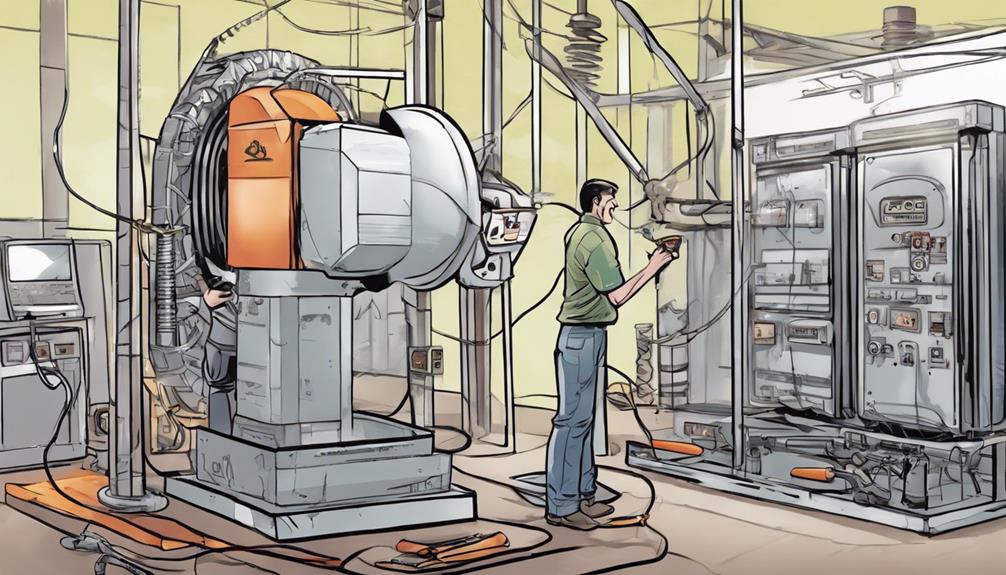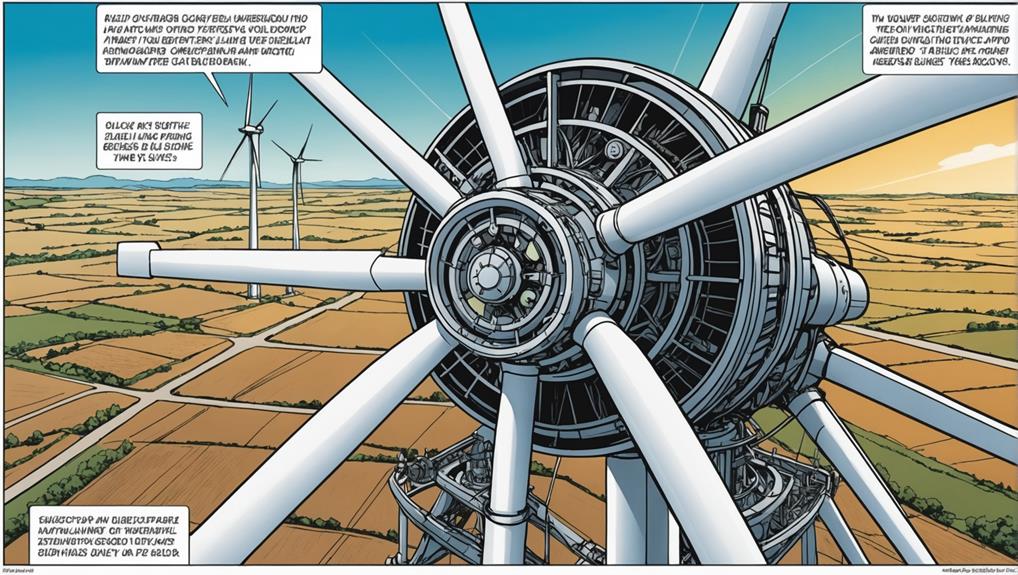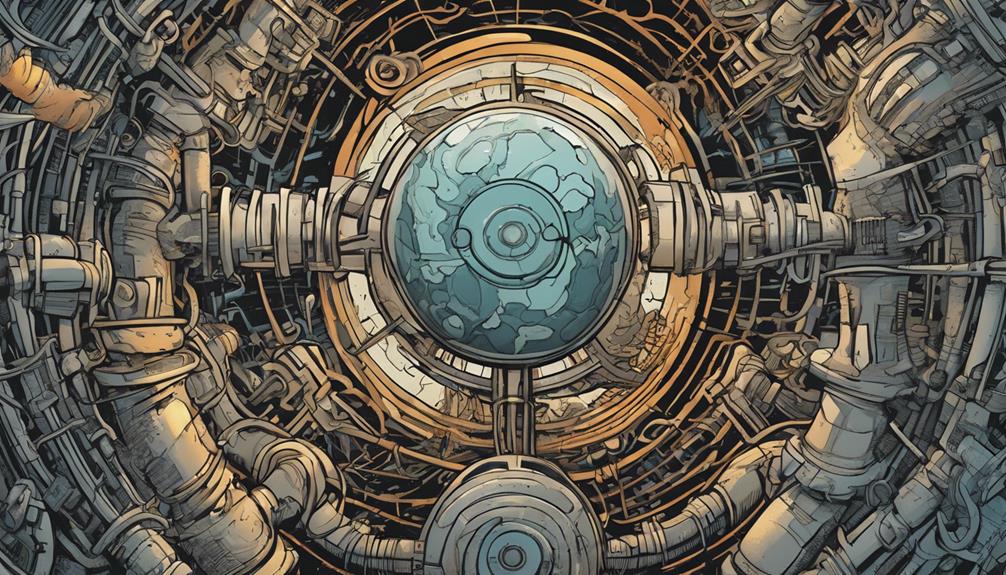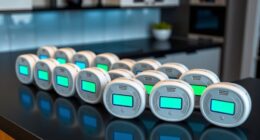To charge a battery using a wind turbine, gather supplies like the turbine, batteries, charger, diodes, and controller. Construct the turbine following the given steps, focusing on electrical connections and assembly. Utilize wind power for expeditions, energy sources, LED lamps, and more. Install electrical components like the rectifier, maintain proper connections, and monitor power output. Follow guidelines for turbine construction, operation, and power management. Implement a reliable charging system with a self-governing feature for efficiency. Master the process step by step to harness wind energy effectively.
Key Takeaways
- Use a charge controller to regulate battery charging from the wind turbine.
- Connect the lead acid batteries to store the generated wind energy efficiently.
- Install a full bridge rectifier for converting AC to DC power from the turbine.
- Ensure proper insulation and connections with Schottky diodes for efficient energy flow.
- Monitor power output and implement a self-governing system to prevent overcharging.
Required Supplies and Components
To begin setting up a wind turbine battery charging system, gather the necessary supplies and components. You'll need a small wind turbine to generate power, lead acid batteries for energy storage, a Battery Charger to convert the power, Schottky diodes for efficient energy flow, and a charge controller to regulate the charging process.
The small wind turbine serves as the primary source of power, harnessing energy from the wind to generate electricity. Lead acid batteries play an essential role in storing this energy for later use, maintaining a consistent power supply even when the wind isn't blowing.
The Battery Charger converts the raw power from the wind turbine into a form that can effectively charge the batteries. Schottky diodes are vital components that facilitate one-way energy flow, preventing reverse current and ensuring the batteries are charged effectively.
Lastly, the charge controller acts as a safety mechanism, controlling the flow of electricity from the wind turbine to the batteries to prevent overcharging and ensure efficient charging.
Design and Assembly Instructions
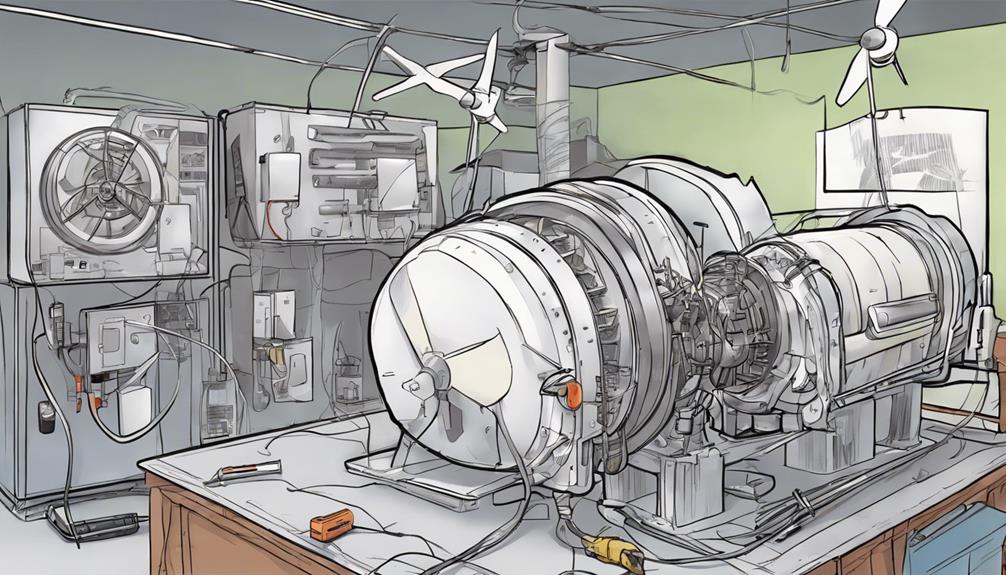
Gather the necessary supplies and components before proceeding to the design and assembly instructions for the wind turbine battery charging system.
The wind generator includes folding blades for portability and is compatible with tripods and camera accessories. The assembly instructions detail constructing the turbine, generating 3W-15W with USB QC output for device charging.
Steps for electrical connections with a full bridge rectifier and tail pipe assembly are provided for a streamlined process. Designed for portability, the wind turbine serves various applications such as expeditions, remote areas, emergencies, LED lamps, small fans, and disaster relief efforts.
The aim of the design and assembly is to offer a reliable energy source for charging electronic devices during trips and outdoor activities.
With these instructions, you can build a portable wind turbine system that efficiently charges devices via USB, making it ideal for on-the-go power needs.
Applications and Usage Scenarios

Wind turbines are frequently used in various settings like expeditions, adventures, and remote areas to provide a reliable source of portable energy. These renewable energy sources are ideal for charging batteries and providing portable power in scenarios where conventional electricity is scarce. From powering LED lamps and small fans to running monitoring devices, wind turbines play an essential role in alternative energy projects and disaster relief efforts.
Charging batteries with wind turbines ensures a sustainable energy solution for recharging electronic devices in remote locations where access to power grids is limited. Their versatility makes wind turbines suitable for a wide range of applications, offering a reliable and eco-friendly source of energy on the go.
Whether you're on a camping trip, conducting scientific research in the field, or involved in emergency response operations, wind turbines provide a practical solution for harnessing renewable energy and staying connected in remote areas.
Electrical Components Installation Guide
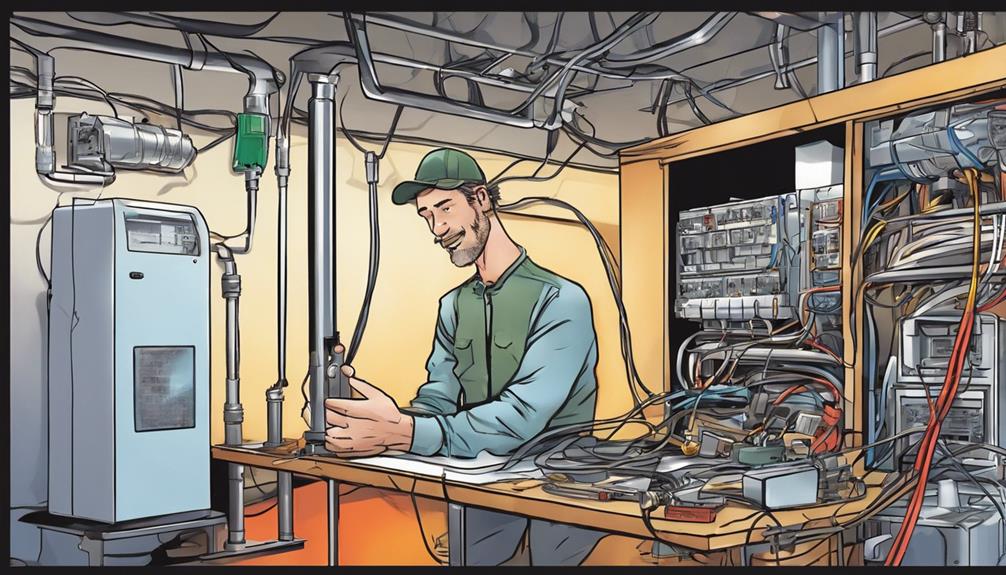
For efficient battery charging with a wind turbine, start by installing a full bridge rectifier to convert AC voltage into DC. Ensure proper connections and insulation of diodes to prevent short circuits and facilitate efficient energy conversion.
Monitoring electrical measurements is essential to track the power output of the wind turbine generator for effective battery charging. When installing the electrical components, pay close attention to the bridge rectifier, as it plays a crucial role in converting the variable AC voltage from the wind turbine into a steady DC voltage suitable for charging batteries.
Proper installation of the rectifier will help optimize the charging process and maximize the energy harvested by the wind turbine. Additionally, utilizing NP-F batteries as energy storage systems can effectively store the electricity generated by the wind turbine for later use.
Wind Turbine Construction Process Overview
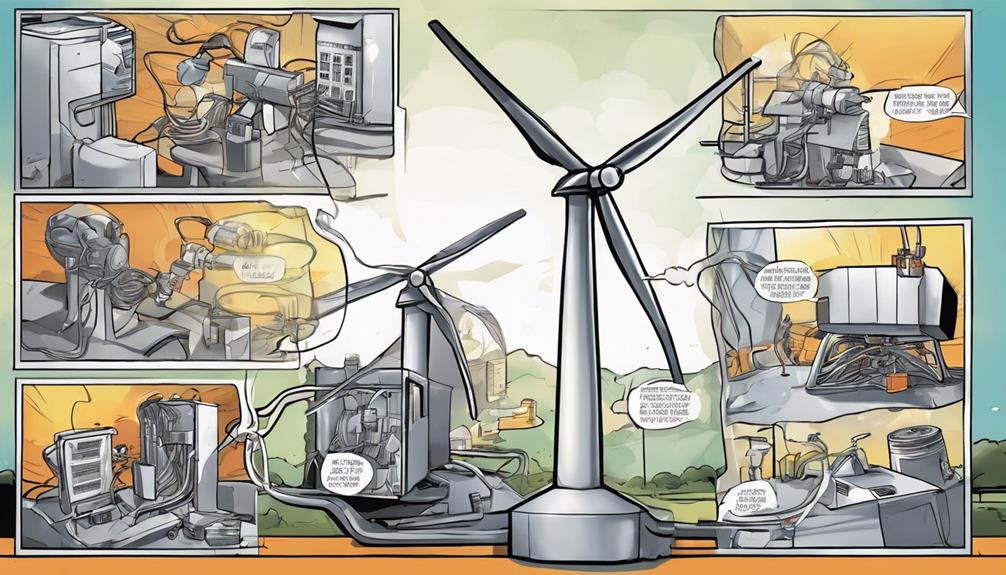
Consider using surplus permanent magnet DC motors like specific Ametek models for efficient power generation when constructing a wind turbine.
To maximize energy production, carefully craft turbine blades from PVC pipe, ensuring smooth shaping and sizing for best wind capture.
The construction process involves building the hub using a toothed pulley and aluminum disk, securely attaching it to the motor shaft.
Assemble the turbine on a simple wooden piece, adding a tail for wind direction control.
For the tower, create a stable base with plywood and a hinge assembly for easy raising and lowering.
When determining the location for your wind turbine, assess wind speed and other energy sources like Solar PV for hybrid setups.
Wind Turbine Operation and Power Management Steps
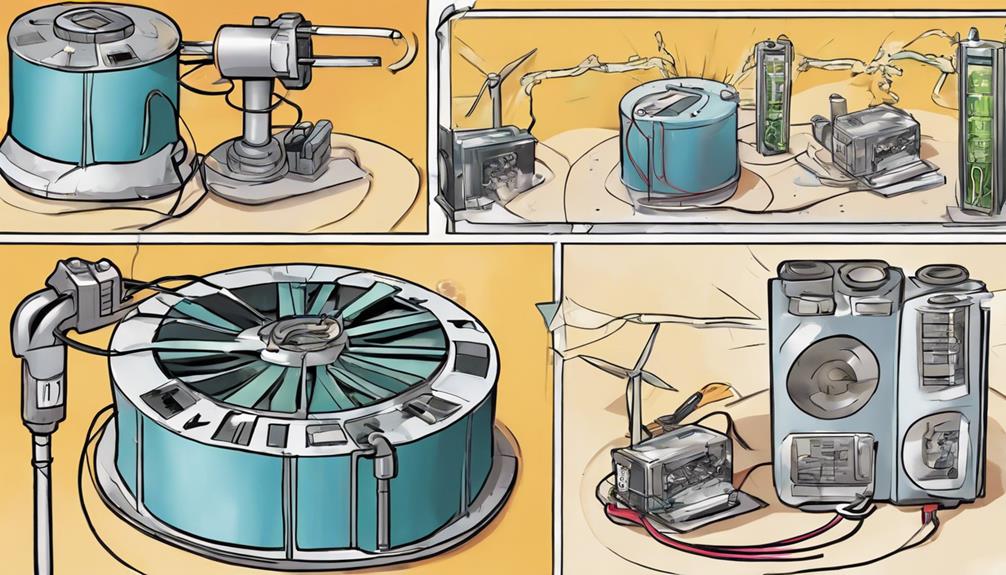
To efficiently manage the power generated by the wind turbine, implement a charge controller using readily available electronic components and LEDs for monitoring battery charging status.
Connect the batteries to store excess power and guarantee a continuous power supply. The wind turbine's blades would spin, generating power output suitable for charging batteries, running inverters, and operating electronic devices.
Implement a self-governing system to regulate power flow and prevent overcharging. If the wind speed isn't sufficient to power all devices directly, the stored energy in the batteries can be used, ensuring a consistent power supply.
Additionally, consider incorporating solar panels to complement the wind turbine's power generation, especially during periods of low wind. The combined use of wind and solar power enables a more stable energy supply for your needs.
With proper power management steps in place, you can depend on the wind turbine to provide enough energy to trickle charge batteries and power various devices, making it a versatile and sustainable energy solution.
Frequently Asked Questions
How to Charge a Battery With a Wind Turbine?
To charge a battery with a wind turbine, connect it to a charge controller for regulation. Use a bridge rectifier to convert AC to DC. Guarantee safe wiring and monitor the process to prevent overcharging.
What Is One Disadvantage of Using a Wind Generator to Charge a Battery?
Charging a battery with a wind generator can be unreliable due to the fluctuating wind speeds, which may cause inconsistent charging. This can impact the battery's performance and efficiency, requiring additional components for regulation.
Why My Wind Turbine Is Not Charging My Battery?
Guarantee all wiring connections are secure and the turbine is positioned correctly for wind reception. Check battery health and system compatibility. Monitor turbine voltage output with a multimeter. Address any issues to optimize charging efficiency.
What Are the Components of a Wind Powered Battery Charger?
To charge a battery with a wind turbine, essential components include the wind turbine for power generation, an alternator for converting wind energy, battery storage for electricity, and converters for regulating electricity flow. Compatibility is key.
Can I Use the Same Wind Turbine Setup to Charge a Battery and Power a Light Bulb?
Yes, you can use the same diy wind turbine tutorial to charge a battery and power a light bulb. With the right setup, the wind turbine can generate electricity to both store in a battery for later use and directly power a light bulb when the wind is blowing.
Conclusion
Now that you have all the necessary components and know how to assemble and install them, you can start harnessing the power of the wind to charge your battery.
Just imagine the satisfaction of knowing you're utilizing renewable energy to power your devices.
So go ahead, get your wind turbine set up and start reaping the benefits of sustainable energy!
